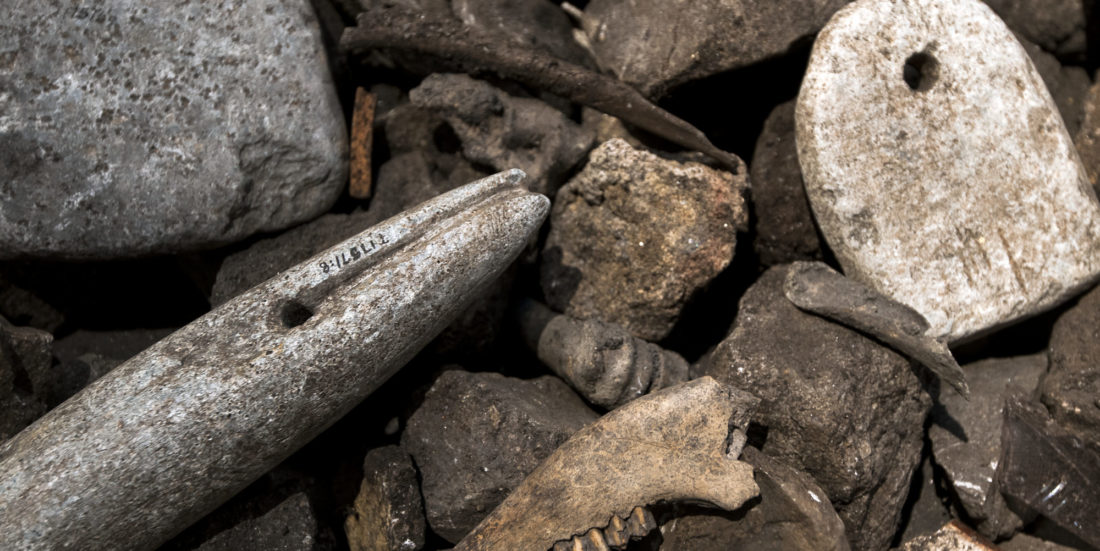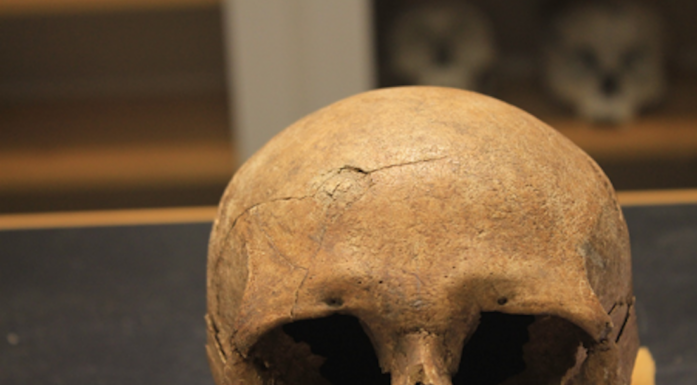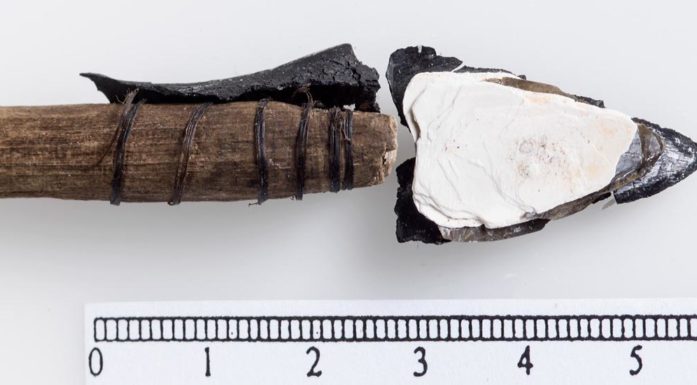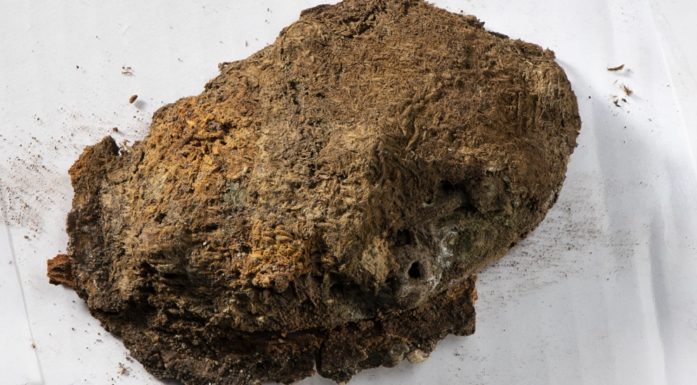Brewing Viking beer — with stones
When archaeologist Geir Grønnesby dug test pits at 24 different farms in central Norway, he nearly always found thick layers of fire-cracked stones dating from the Viking Age and earlier. Long ago, Norwegians brewed beer using stones.
There’s nothing archaeologists like better than piles of centuries-old rubbish. Ancient bones and stones from trash heaps can tell complex stories. And in central Norway, at least, the story seems to be that Vikings and their descendants brewed beer by tossing hot rocks into wooden kettles.
“There are a lot of these stones, and they are found at most of the farmyards on old, named farms,” says Geir Grønnesby, an archaeologist at the NTNU University Museum.
Grønnesby is fascinated by the history of Norwegian farm settlements, and with good reason. Much of the story of how Norwegian farms were settled and developed over the millennia remains a mystery.
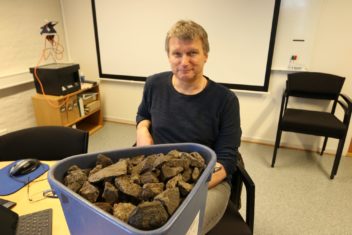
Geir Grønnesby, an archaeologist at the NTNU University Museum, has buckets full of rocks that have been used to brew beer since the Viking age. They’re found in buried rubbish heaps around many farms in Trøndelag. Photo: Nancy Bazilchuk
There’s a simple reason for this: most archaeological digs are from construction projects, because developers are required to check for cultural artefacts before beginning construction. It is rare that a developer would build a road or other big development through a farm, which means they are rarely dug up by archaeologists.
In other words, “most of the archaeological information we have about the Viking Age comes from graves, and most of the archaeological information about the Middle Ages comes from excavations in cities,” Grønnesby said. That’s a problem because “most people lived in the countryside.”
Essentially, he says, Norwegian farms are sitting on an enormous underground treasure trove that in places dates from the AD 600, the late Iron Age — and yet they are mostly untouched.
“So I started doing these small excavations to look for cultural layers in farmyards,” he said. “The oldest carbon-14 dates I found are from 600 AD, and all the dates are from this time or later. And when I found the stones, I had to write about them, since there were so many.”
A curious sociologist
Grønnesby is not the first to remark on fire-cracked stones on farms in central Norway. That distinction goes to a pioneering sociologist named Eilert Sundt, who recorded an encounter on a farm in 1851 in Hedmark.
As Sundt later wrote, he was walking and saw a farmer near a pile of strange-looking, smallish stones.
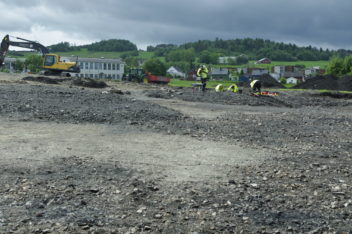
Mounds of fire-cracked stones, or brewing stones, from a farmstead in Ranheim, outside of Trøndheim. Photo: Geir Grønnesby
“What’s with these stones?” he asked the farmer, pointing to the pile. “They’re brewing stones,” the farmer told him. “Stones they used for cooking to brew beer — from the old days when they didn’t have iron pots.”
In his article, Sundt noted that most of the farms he visited had piles of burned or fire-cracked stones. Every time he asked about them, the answer was the same: they were from brewing, when the stones were heated until they were “glowing hot” and then plopped into wooden vessels to heat things up.
The stones were so omnipresent, Sundt wrote, and so thick and compact in places that houses were built right on top of them.
Reports from archaeologists who examined farmsteads in more recent times also confirm this observation.
When one archaeologist dug a test trench in the 1980s at a farm in Steinkjer, north of Trondheim, he found a cultural layer more than a metre thick, much of which was fire-cracked stone.

This excavation in Hofstad, on the island of Hitra, shows a thick layer of brewing stones and other Viking and mediaeval aged trash. Photo: Geir Grønnesby
Grønnesby himself excavated more than 700 cubic metres of stone from a portion of a farmstead in Ranheim, also north of Trondheim. And when Grønnesby did his test sample of the 24 farms, 71 per cent either had cracked stone layers or probably did.
Rituals and the Reformation
It’s not so unusual that Vikings brewed beer using stones, Grønnesby said. Brewing with heated stones has also been reported from England, Finland and the Baltics. It’s a tradition that continues in Germany, where it’s possible even today to buy “stone-brewed beer”.
Grønnesby says the presence of great numbers of brewing stones on Norwegian farms underscores the cultural importance of beer itself.
“Beer drinking was an important part of social and religious institutions,” he said. For example, the Gulating, a Norwegian parliamentary assembly that met from 900 to 1300 AD, regulated even the smallest details of beer brewing and drinking at that time.
The Gulating’s laws required three farmers to work together to brew beer, which then had to be blessed. An individual who failed to brew beer for three consecutive years had to give half his farm to the bishop and the other half to the King and then leave the country. Only very small farms were exempt from this strict regulation.
What’s equally interesting is when brewing stones disappear from cultural layers — at about 1500, right around the time of the Reformation.
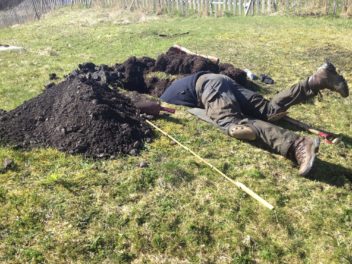
The work of an archaeologist may seem glamourous — think Indiana Jones — but for Geir Grønnesby from NTNU’s University Museum, it sometimes involves digging holes in search of Viking and Middle Age trash heaps. Photo: Geir Grønnesby, NTNU University Museum
“It could just be a strange coincidence,” Grønnesby said. “It could be religion. Or it could be that iron vessels were more widely available by then.”
From rubbish heaps to treasure troves
Each time a glowing hot brewing stone was plopped into a cold vat of fluid, it would crack. After several of these cycles, the stones would be too small to be useful and the brewers would toss them out onto a rubbish heap.
That means the thick layers of stones also contain other artefacts, like old spinning weights and loom weights, animal bones and beads. It is for this reason, as much as for the stones themselves, that the layers are important, Grønnesby said.
“Archaeologists are always finding these layers, but they used to look at them and scratch their heads, and (the layers) didn’t get the kind of recognition they deserve,” he said. “These layers represent archives from the Viking Age to medieval times, so we should excavate them more often.”
You can read about Grønnesby’s research in the recently published book, “The Agrarian Life of the North: 2000 BC to AD 1000: Studies in Rural Settlement and Farming in Norway”, edited by Frode Iversen & Håkan Petersson. Grønnesby’s chapter is entitled “Hot Rocks! Beer Brewing on Viking and Medieval Age Farms in Trøndelag.”
